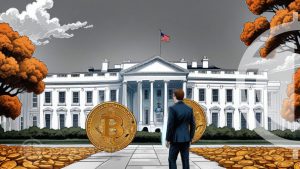
In a dynamic twist of the crypto landscape, Bitcoin (BTC) holdings on centralized exchange platforms have plunged to a level unseen in over five years. This unprecedented drop of 4%, leaving exchange reserves at a mere 2 million BTC (equivalent to $54.5 billion), has unveiled a multifaceted evolution within the market.
According to revelations from CryptoQuant, a pioneering on-chain data analytics service, this recent decline reflects a blend of favorable and concerning developments. A noteworthy catalyst is the surging prominence of revolutionary services such as Copper’s ClearLoop. This innovative platform empowers users to trade without transferring their assets to centralized exchanges.
Markus Thielen, the insightful Head of Research and Strategy at Matrixport, stated,
It decline in exchange volume] partly reflects the increased demand for services like Copper’s Clearloop, which requires only a minimum of coins to be posted on exchanges, that are a natural progression of the crypto market where exchanges will have to work with lower balances.
After the collapse of FTX, the exchange owned by Sam Bankman-Fried, there has been a growing inclination among investors to store their cryptocurrencies away from centralized exchanges. FTX, once a heavyweight ranking as the world’s third-largest exchange by trade volume, shook investor confidence due to the mingling of user funds.
The dwindling exchange reserves are a stark reminder of the pivotal importance of self-custody, as elucidated by Thielen. PricewaterhouseCoopers’ recent report on global crypto hedge funds reinforced this sentiment, indicating that a mere 9% of respondents opt to store their assets on exchanges exclusively. The industry trend leans heavily toward diverse custody forms, with third-party custodians gaining favor among market-neutral, discretionary long-only, and quantitative long/short strategies.
As the crypto verse continues its transformative journey, the decrease in exchange reserves offers a compelling narrative of investor confidence. Analysts speculate that the trend suggests a preference for direct asset custody, reflecting anticipation of future price surges. Thielen emphasized that this optimistic perspective holds true, as market players position themselves for a crypto-powered future.














